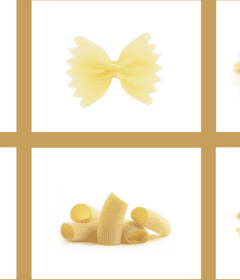Make Fresh Pasta Dough
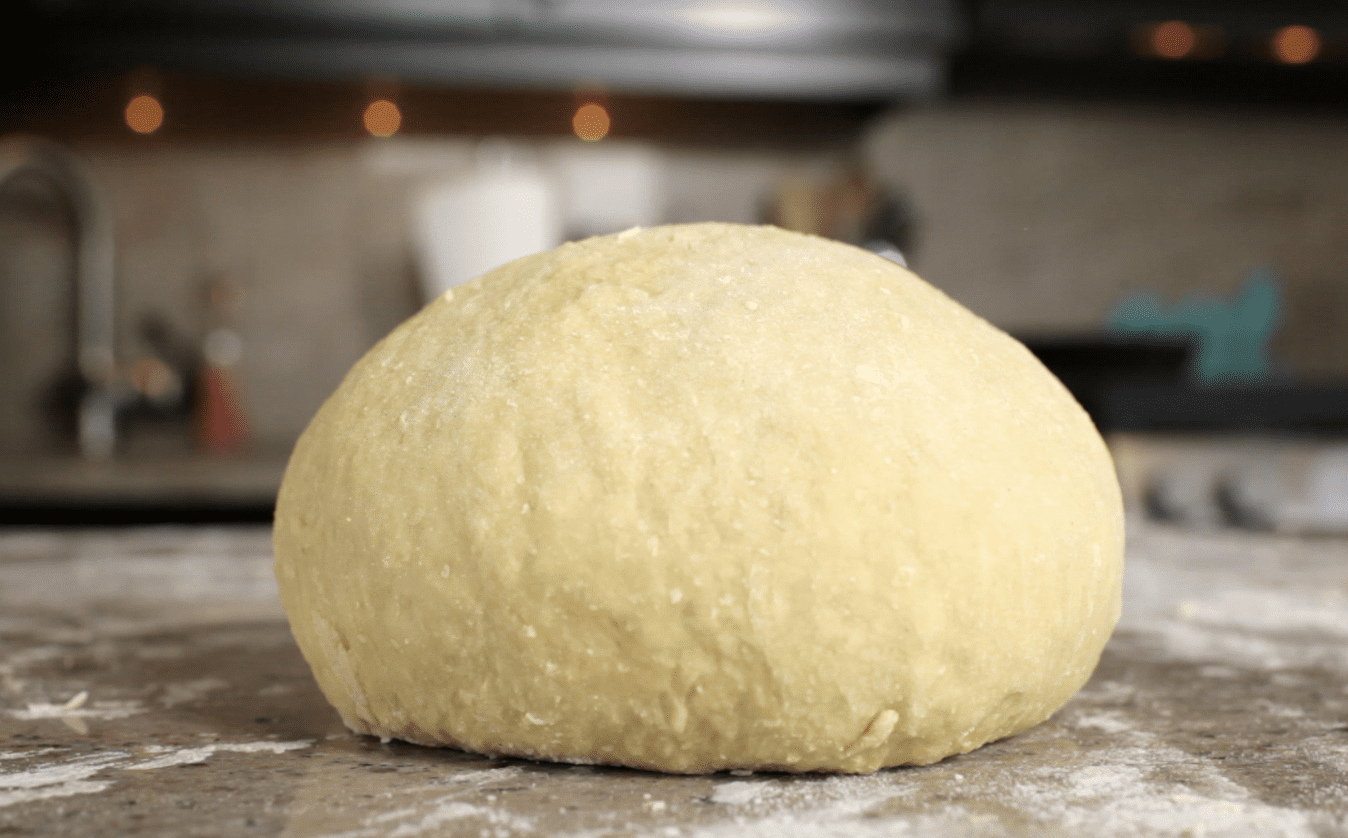
Make Fresh Pasta Dough – A basic and easy recipe for homemade pasta dough.
Making pasta at home is not as hard as it may seem and is so worth the extra effort.
With this recipe, you can make lasagne sheets, farfalle, ravioli, tagliatelle, pappardelle and so much more.
The process of making homemade pasta may seem intimidating, but it’s a skill that can be easily honed with a few simple recipes and a little bit of practice.
You could spend your entire life learning about the hundreds of pasta shapes and varieties, but to boil them down to basics, there are three main categories: Long pasta such as spaghetti, short pasta such as penne, and stuffed pasta like ravioli and tortellini.
Flour, water, and optionally eggs are the only ingredients required to make fresh pasta dough.
While some more complex shapes of pasta are difficult, if not impossible, to make without special equipment, there are lots of styles that can be crafted with just a flat surface, a rolling pin, and a cutting utensil.
Making your own sheets of pasta dough means you can shape and stuff them any way you’d like, expanding your culinary creativity rather than being limited to the tastes and textures of store-bought brands.
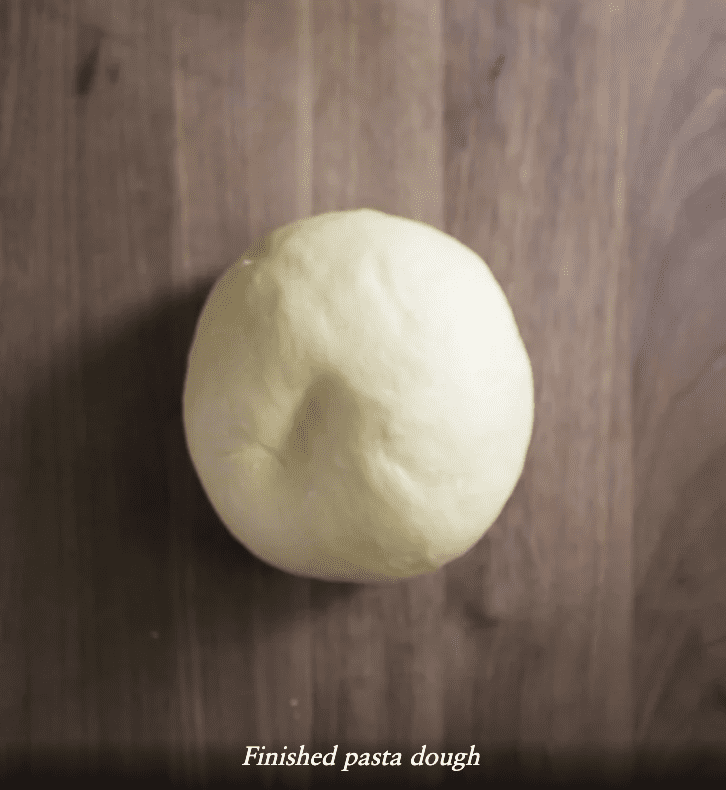
Make Fresh Pasta Dough – Egg to Flour Ratio
The general rule is 1 large egg to every 100g (3.5 oz) of 00′ flour.
Some like to add 1 extra egg yolk to the whole mixture – not mean an extra egg yolk to every 100g.
The eggs must be the highest quality free range eggs you can find.
In Italy, they have egg specifically for making pasta called ‘Pasta Gialla’ (yellow dough or yellow pasta).
The yolks are bright orange giving the pasta a beautiful yellow color.
The size of the egg matters.
If you use small or medium-sized eggs you will need less flour – or more eggs.
Stick to large eggs for the best results using this recipe.
How to Make Homemade Pasta Dough
The traditional way, by hand: mound the flour onto a board (or bowl).
Make a well in the center; crack in the eggs.
With a fork, beat the eggs together and then gradually incorporate the flour.
Finish by hand to form a rough dough.
If all the flour has been used and the ball is dry, you can add a few drops of water or olive oil to moisten the texture.
PRO Bakers Tip
Cover the dough and rest for 10 minutes.
This step is not mentioned in most pasta recipes but it’s key.
From a bread baker’s perspective, the dough needs time to hydrate before kneading.
It will be much softer and easier to handle.
Make Fresh Pasta Dough – Knead the Pasta Dough
Knead the dough for 5-10 minutes.
Do this by pushing the dough forward with the heel of your hand.
The texture will be very stiff at first.
But rest assured, by the 2 minute mark it will start to soften.
Continue to work the dough by folding it into itself- you want the same consistency throughout the dough (not a moist interior and dry exterior).
The goal is a soft, malleable dough with a talcum powder-like finish.
When you poke it, the dough should bounce back.
Shape the dough into a ball, wrap tightly in plastic, and rest for 30 minutes at room temperature.
Make Fresh Pasta Dough – Roll Pasta Dough Into Sheets
Set up your station.
Dust your work surface, a sheet pan, and the pasta machine with semolina flour – flour everything as you do not want the dough to stick and tear.
Cut the dough into 4 equal pieces; flatten one into a thin 6-8-inch oval disc (re-wrap the remaining pieces so they don’t dry out).
Send the disc through the roller on the lowest/widest setting.
Now, send it through again and again (3 times is usually good).
Tip: if using a pasta machine, refer to their specific instructions for rolling the dough.
The settings are different, but the rolling process is the same.
Continue to roll the dough through all of the settings for fettuccine, pappardelle and tagliatelle.
For ravioli, the dough needs to be thinner.
The higher the number, the thinner the dough will become.
The pasta sheet is ready when it’s slightly translucent and you can see your hand underneath.
When finished, fold the pasta sheet in half, place onto a tray and cover.
Make Fresh Pasta Dough – Cut Sheets Into Pasta
Before cutting: semi-dry the pasta sheets ever so slightly.
This gives the cut pasta strands a more firm and “leathery” finish, rather than a soft and doughy feel (this helps to prevent the strands from sticking together later on).
To Semi-Dry: Hang the pasta sheets over the back of a chair or on a rod for about 5-15 minutes.
Keep your eye on the time; you don’t want the sheets to dry out completely.
Touch them occasionally.
You will feel the difference in texture as time goes by.
To cut: Take a pasta sheet and cut in half.
Send it through the cutter attachment.
Dust the pasta noodles liberally with semolina flour to prevent sticking- don’t skimp here.
Coil the pasta around your hand to create a nest or arrange the strands loosely on a tray.
Repeat the cutting process for the remaining pasta sheets.
Repeat the rolling process for the remaining 3 pieces of dough.
Make Fresh Pasta Dough – PRO TIPS
Use 00′ flour for the best results when making pasta dough from scratch.
Use the highest quality free range eggs possible.
Knead the dough for no less than 10 minutes.
It should be smooth and elastic in texture.
If you’re unsure cut the dough in half, if there are tiny air bubbles inside the dough it’s ready.
Make sure to rest the pasta dough for 30 minutes before rolling out.
Make sure to lightly sprinkle flour or semola on your work surface when rolling out.
Always sprinkle a little flour on the rollers of your pasta machine to stop it sticking.
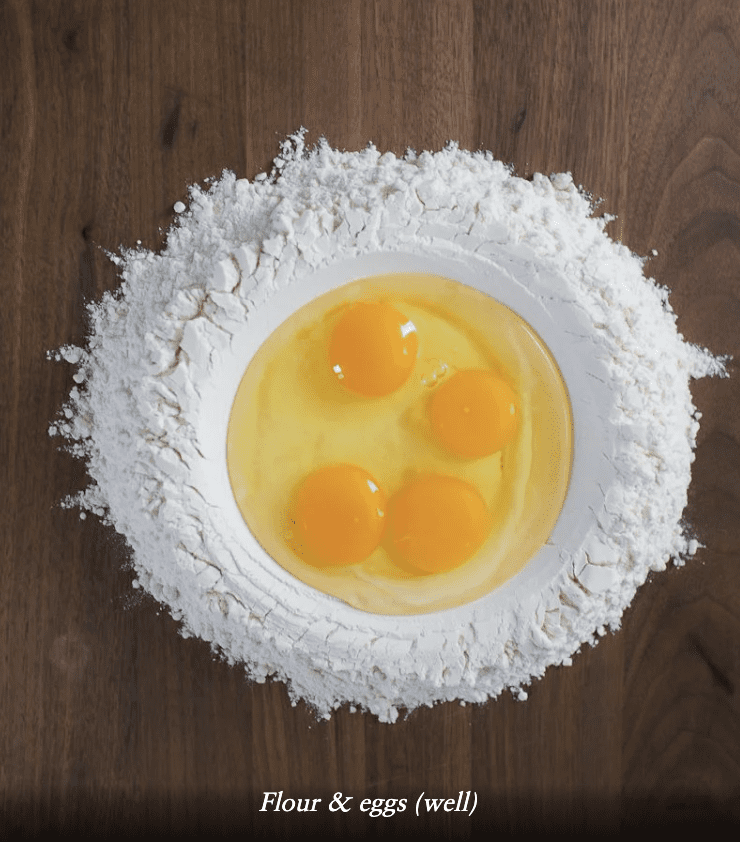
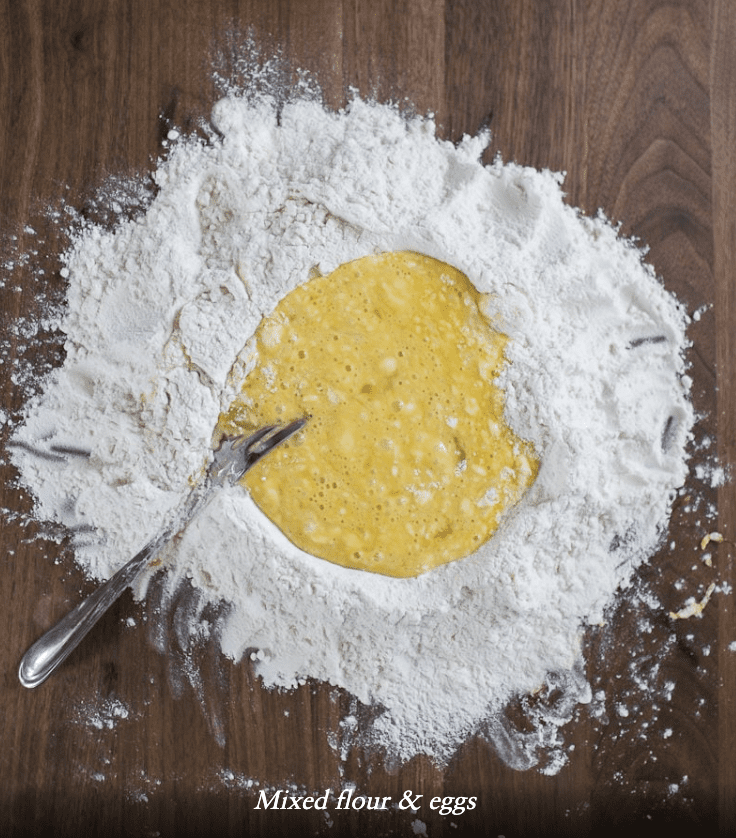
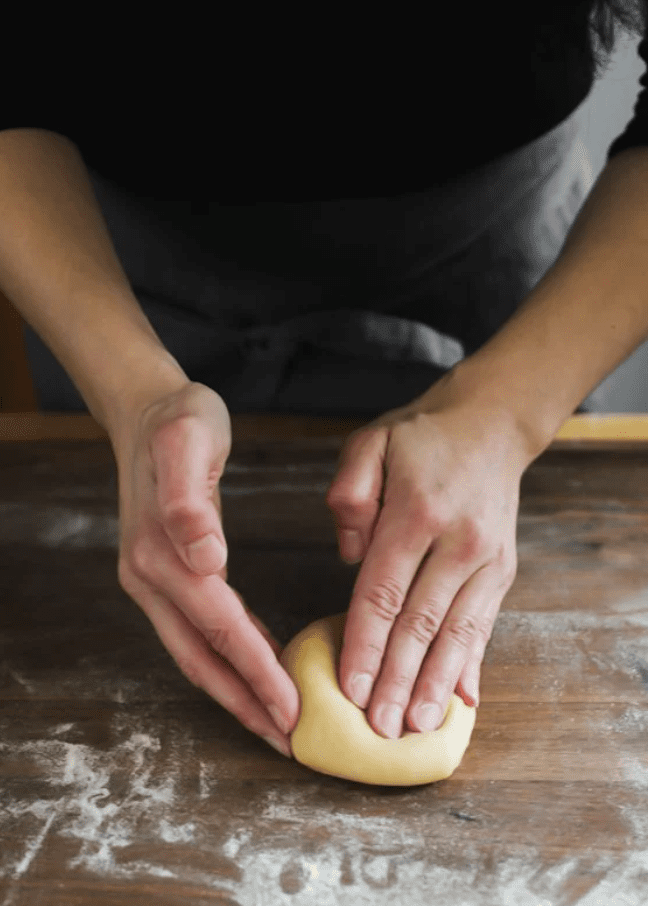
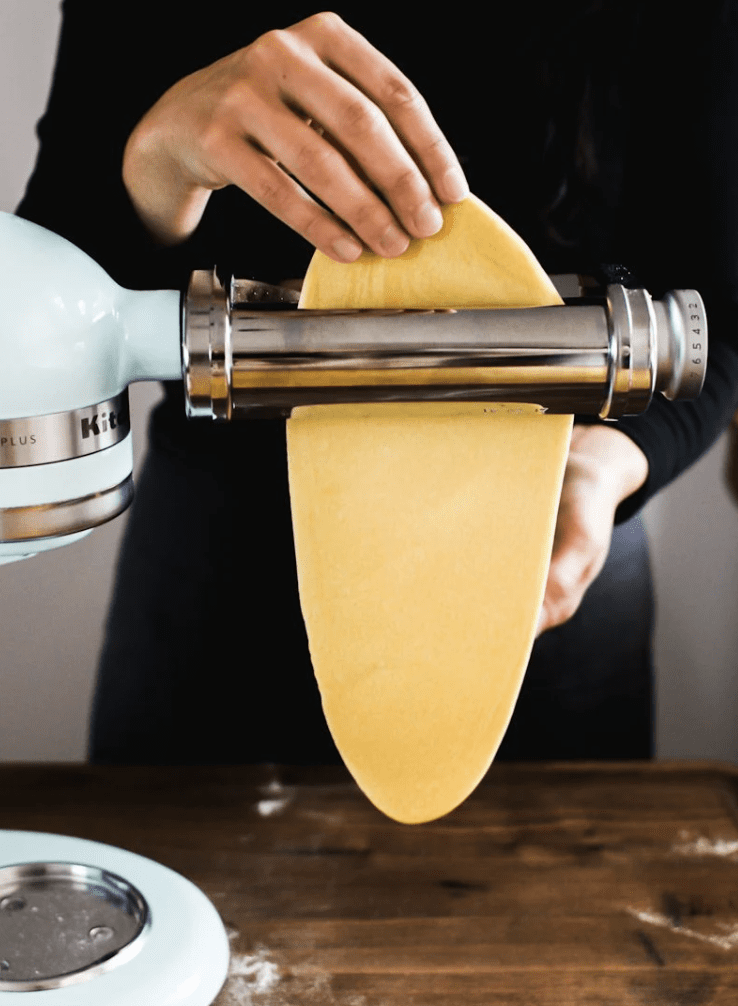
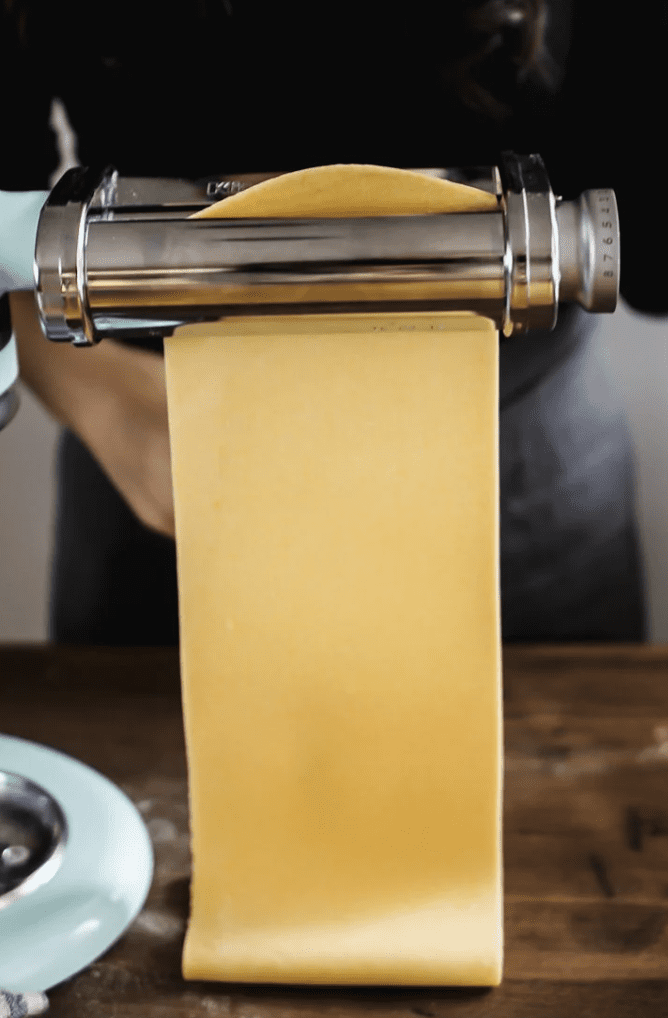
Make Fresh Pasta Dough – Ingredients
400 g 00’ Flour (3 cups spooned and leveled)
4 large eggs free range
1 egg yolk free range
Make Fresh Pasta Dough – A Few Tips:
Make space.
You’ll need a long, clutter-free surface to roll the dough.
Do not overlook this tip.
Pasta sheets can measure up to 3 ft long.
The kitchen table or island is ideal.
Weigh your ingredients (including the eggs).
This will ensure the pasta dough is the correct texture, which is soft and pliable.
If your eggs are too small, the dough will be dry and crumbly.
Use a digital scale for accuracy.
Wrap it up.
Pasta dough dries out quickly.
Keep it covered at all times.
Use plastic wrap, a clean kitchen towel or an upturned bowl.
Try Molino Grassi or Caputo pasta flour.
Substitute with King Arthur all purpose flour for similar results.
Make Fresh Pasta Dough – Pasta Dough Equipment
Kitchen Aid Stand Mixer (w/ pasta attachments): If you already have one, the stand mixer can be used from start to finish.
Mix and knead the dough in the bowl; use the pasta roller & cutter set to make pasta.
Pasta Machine: This product rolls and cuts the dough with great results.
There are manual crank and electric pasta machines.


